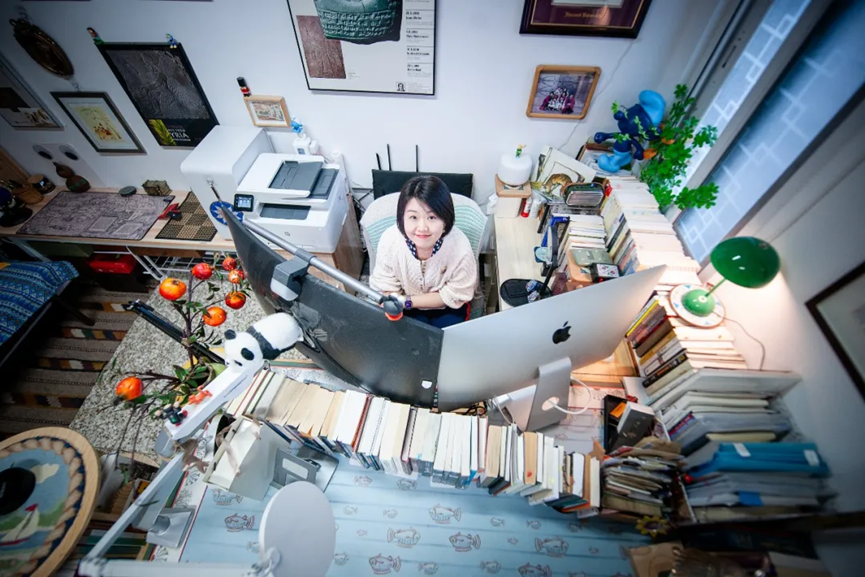
On this World Book and Copyright Day, let's step into Jia Yan's study room, which is filled with books, paintings, and artifacts about Ta-miu, the famous cat from ancient Egypt.
Peking University, April 23, 2024: When a cat lover becomes an art historian, she decorates her study with merchandise of Ta-miu (she-cat), the beloved cat owned by Ancient Egyptian Crown Prince Thutmose. This is exactly what Jia Yan, an art historian at Peking University (PKU), stuffs her study room with, which she affectionately named “Miu Study,” a playful tribute to her subject of study-- cats in Ancient Egyptian art.
Nurturing a Ta-miu
Open the door to Jia Yan’s study room, and one will fall into Alice’s Wonderland. Cats in various forms are omnipresent—nestled within dolls, hidden in motifs, peeking from nooks and crannies of the room.
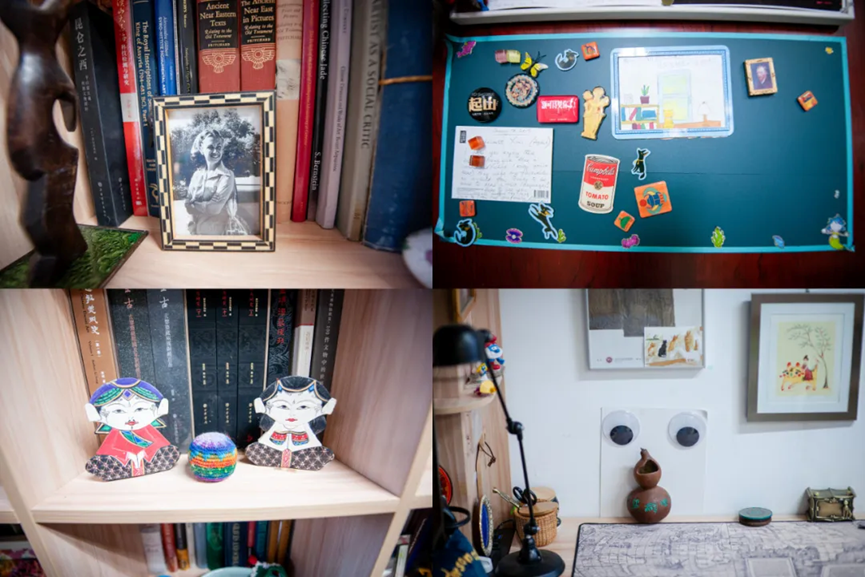
Jia Yan’s peculiar obsession with the Ta-miu can be traced back to her student years. While studying Egyptology in the Department of History at Peking University, Jia Yan encountered an Ancient Egyptian cat named “Ta-miu” in her readings, finding it so adorable that she was determined to study it in the future. In 2020, Jia Yan, now an assistant professor of ancient Near Eastern art history at the School of Arts, reunited with the “Ta-miu” in her research. She was invited to submit semi-academic articles to PKU Institute of Humanities and Social Sciences, leading to the creation of the four-part series, “Ta-Miu’s Ideal: Raising a Virtual Egyptian Cat.”
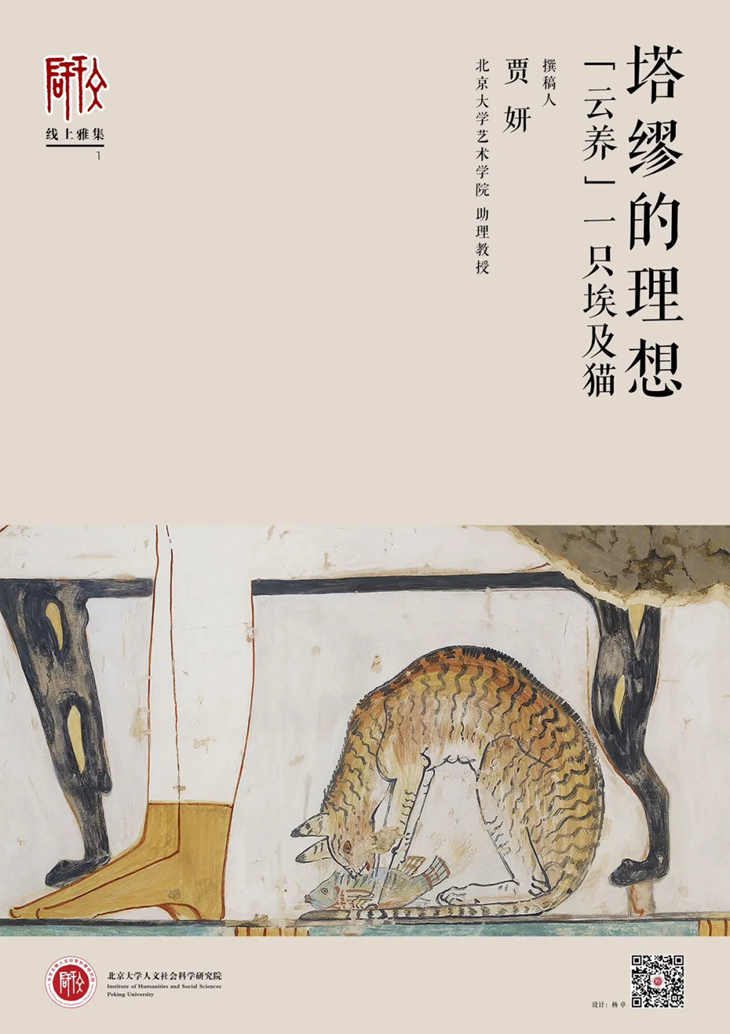
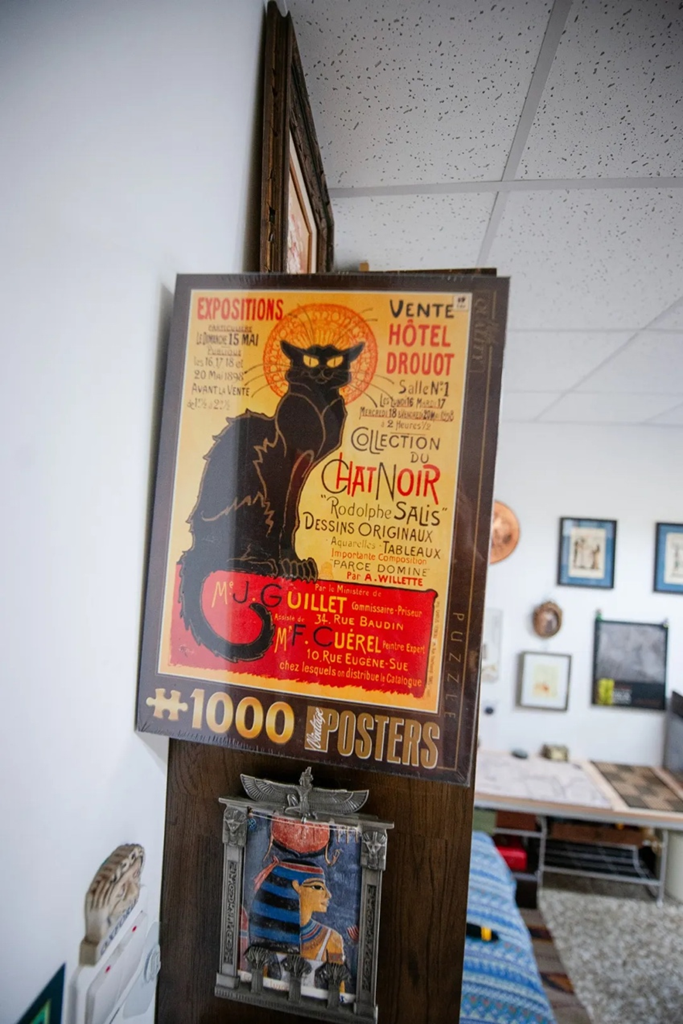
To shed more light on this mysterious feline that exists only in the totems of Ancient Egypt, Jia Yan tirelessly studied divine cats in museum collections worldwide, tracing the origins of the sacred attributes of Egyptian cats and their integration into the secular and spiritual world of Egyptians. Her writings, rich in academic inquiry and enhanced by her love for cats, sparked intense curiosity and lively imagination. Beyond academia, the “Ta-Miu” series garnered attention from cat enthusiasts, fostering connections with the cat community at Peking University.
Ancient Egyptians were among the first peoples to domesticate cats and give cats a place in art. The cat is an extremely important manifestation of gods in Ancient Egyptian mythology—it is the incarnation of the Sun God, and also constitutes the appearance of the goddess Bastet. For Jia Yan, delving into the ancient Egyptian art of cats is a unique way of cyber cat-petting. She found peace and relaxation while writing about Egyptian cats, as if her ideals of the “Ta-miu” have finally realized after many years. Now, Jia Yan’s research on Egyptian cats is about to be published, imparting new life on these creatures in her writings.
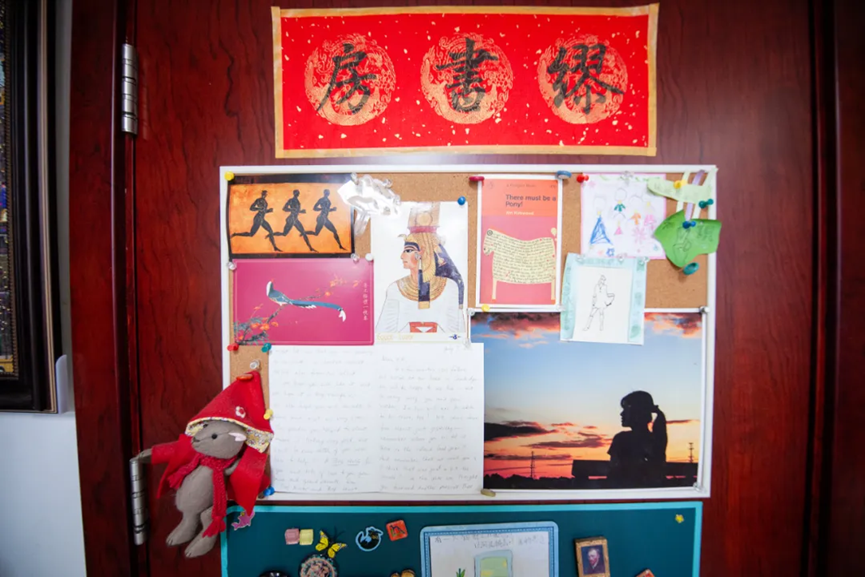
The door to “Miu Study”
The Miu Study: A Palace of Memories
Jia Yan’s abundant collection of books is a testament to her rich academic journey, covering various periods of Chinese and foreign art history, with half of them being hefty picture albums. Since graphic materials are rarely reprinted, Jia Yan had found some of them in vintage London bookstores. In her spare time, Jia Yan enjoys reading pre-Qin (before 221 BC) works, medieval literature, and the history of the new culture.
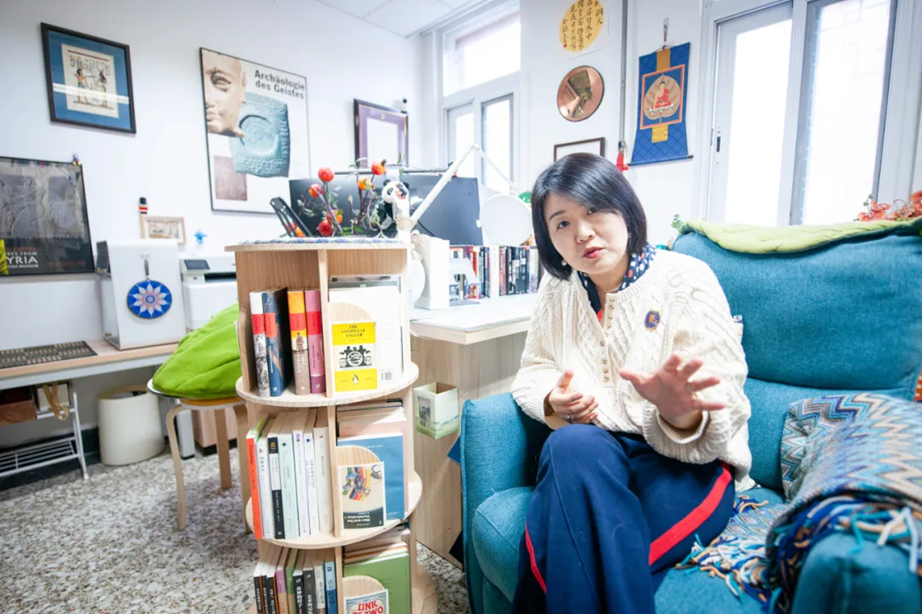
The Miu Study is split into three sections by a T-shaped desk and an armchair. By the armchair lies books meant for casual perusal, covering topics like pre-Qin history, medieval literature, and new culture history. On one side of the desk, scholastic works on art history are placed by the window like scattered notes on staves. Sitting before the computer, reference books and atlases are readily available, often used for citations and annotations in academic papers or as images and explanations in presentations. The three sections correspond to Jia Yan’s different reading needs as a professor, a researcher, and a bookworm.
Despite the sheer number of books in the study room, one book stands out— an original copy of L.W. King’s Bronze Reliefs from the Gates of Shalmaneser published in 1915. It was gifted to Jia Yan at her graduation ceremony by Professor Irene Winter, an American art historian and pioneering scholar of ancient Near Eastern art. The book’s inscription reads: “For Jia Yan, 28 May 2015, your open door… my closed door!”
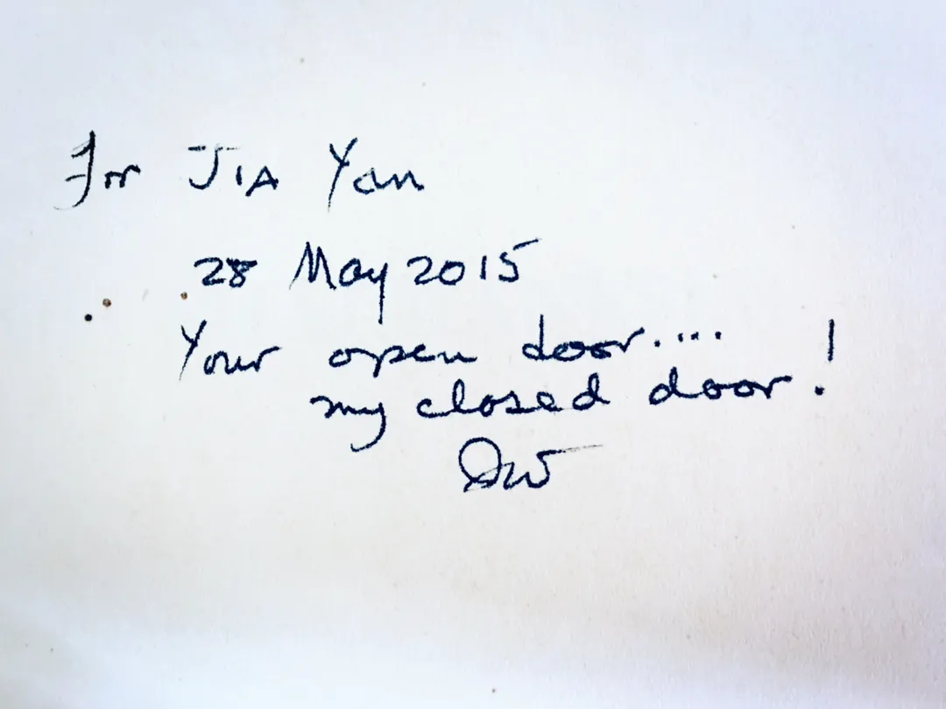
From 2005 to 2015, Jia Yan studied under Professor Irene Winter at Harvard’s Department of Art and Architecture History, focusing on ancient Near Eastern art history. During those ten years, she transitioned from studying ancient Egypt to studying the ancient Mesopotamian region, delving into the imagery of the Assyrian period, and choosing the Assyrian bronze door reliefs as her Ph.D. thesis topic.
A curious framed poster of an academic lecture from 1998 hangs behind Jia Yan’s desk. The story behind this ordinary wall décor is filled with many coincidences and twists: In 1998, Professor Irene Winter, Jia Yan’s future Ph.D. advisor, held a lecture in Germany, and the poster was preserved by a thoughtful individual. Seventeen years later, at Jia Yan’s doctoral thesis defense, Peter Machinist, a professor from Harvard’s Department of Near Eastern Languages and Civilizations presented this poster to her, as a blessing and encouragement to the last disciple of Winter. That fateful day marked the end of Jia Yan’s student years, but also the beginning of her own academic journey as a researcher of ancient Near Eastern art history.
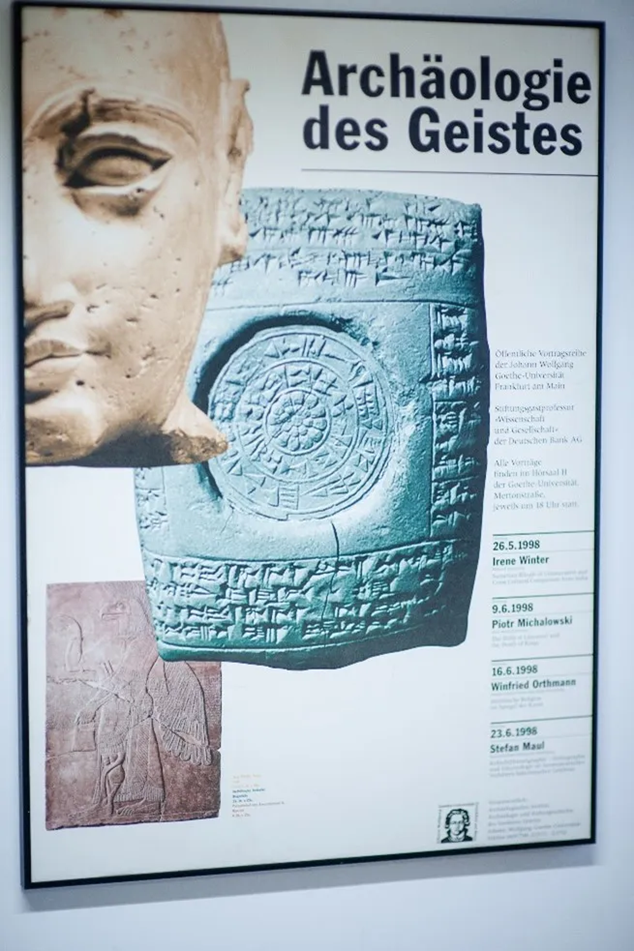
The back of the poster is inscribed with a parting message: “From now on, you have to fly on your own.”
Art History, an endless jigsaw puzzle
Jia Yan likens the study of ancient art history to assembling a puzzle. The distant past reveals itself in fragments: a corner of a fresco, remains of a temple, hidden relics. Deciphering these clues to reconstruct the lost worlds is akin to completing a thousand-piece puzzle with just a few dozen pieces. This analogy extends to her Ph.D. dissertation on the bronze door reliefs from the Balawat site in Iraq, aiming to reconstruct the grandeur of early Assyrian palaces and temples, and to trace the empire's expansion and governance.
Reconstructing the past involves piecing together fragments of history to reveal the texture and essence of vanished cultural life. Jia Yan's academic journey from world history to Egyptology and finally to ancient Near Eastern art history was driven by a lasting passion and unwavering purpose. Her early inspiration came from reading about exotic lands in San Mao’s writings. Her academic focus was crystallized during her undergraduate studies on ancient Eastern civilizations and Egyptian hieroglyphics, inspired by Professor Yan Haiying’s eloquent teaching.
During her visit to Cairo University, Jia Yan learned that visual materials could offer a richer narrative than textual records for ancient civilization. Later, she worked at the Harvard Museum for a year, taking advantage of the opportunity to physically touch the artifacts, feeling the thrilling interplay of hands and eyes on an object.
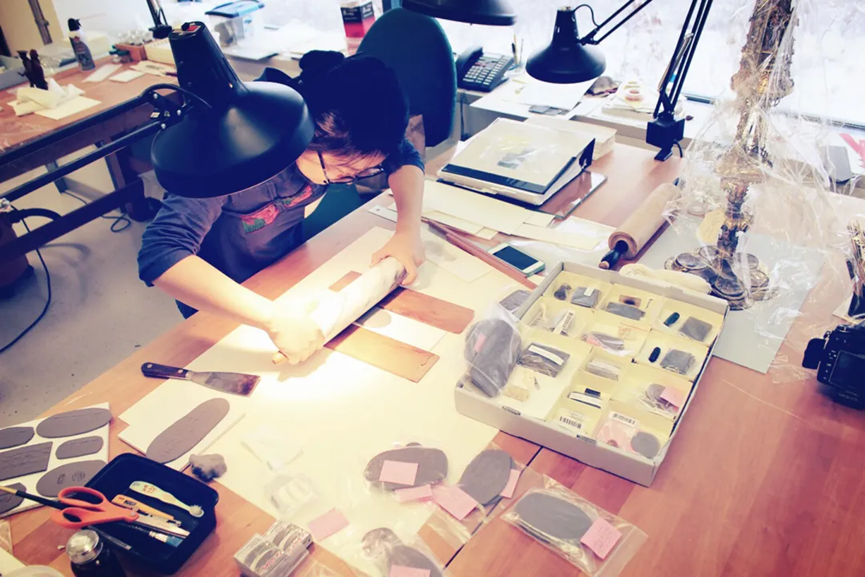
Jia creates cylinder seals
Jia Yan’s work, whether wandering through Mesopotamian ruins or piecing together academic knowledge, is driven by a deep reverence for history and a sense of loss for relics that vanish suddenly, forever silenced. This sense of urgency and the fragility of historical memory form the core of her academic pursuit, capturing the essence of her dedication to preserving the past.
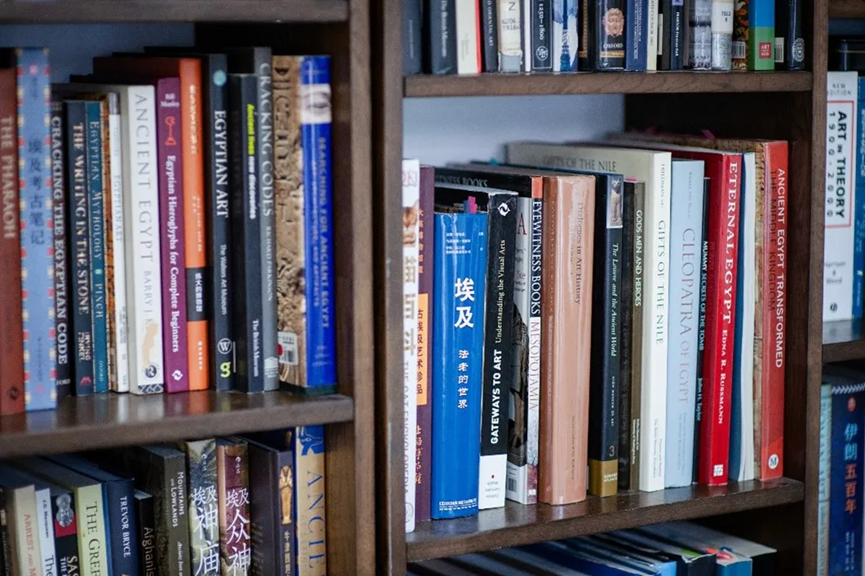
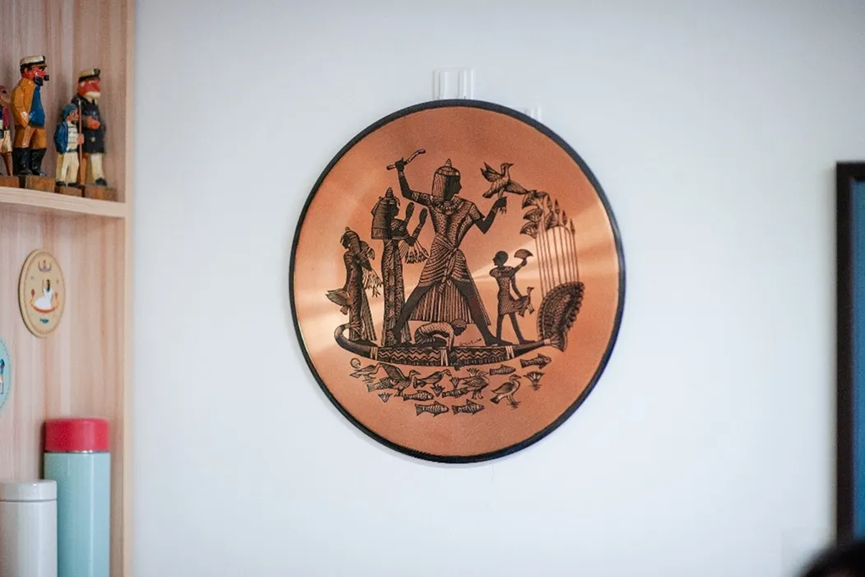
In Jia Yan’s study, every cat figure, book, and piece of art holds a narrative, a slice of history that she is determined to preserve and share with the world. This book-filled space is not just a study; it is a microcosm of her academic achievements and a testament to her love for history and art.
This story is featured in PKU News' "A Scholar's Study" series; more from this series:
Profile | He Guimei’s academic odyssey
A Scholar's Study | Fan Ye's bonanza of books
Written by: Sun Yiwei
Edited by: Wu Jiayun
Photos by: Lu Chen
Source: PKU WeChat (Chinese)